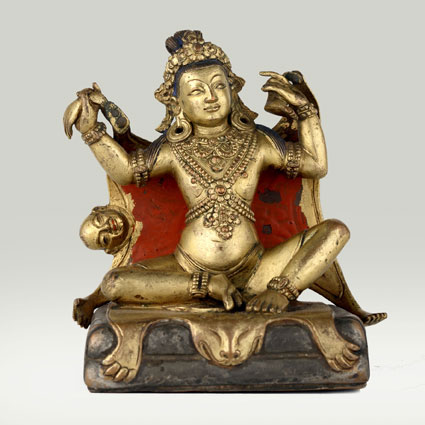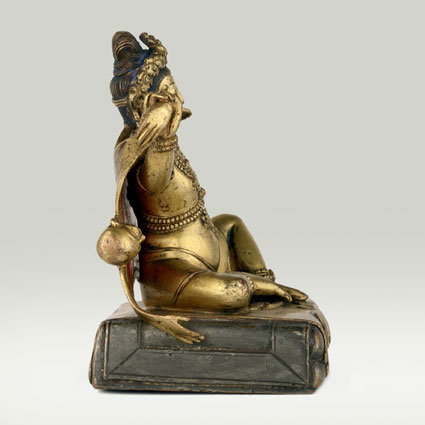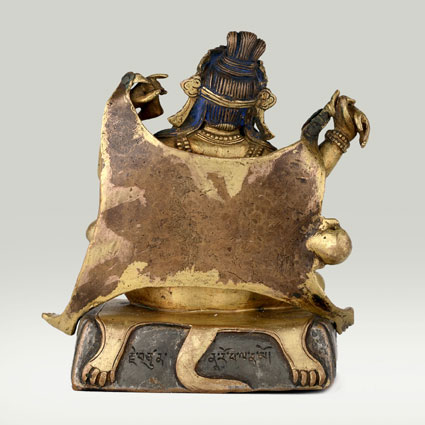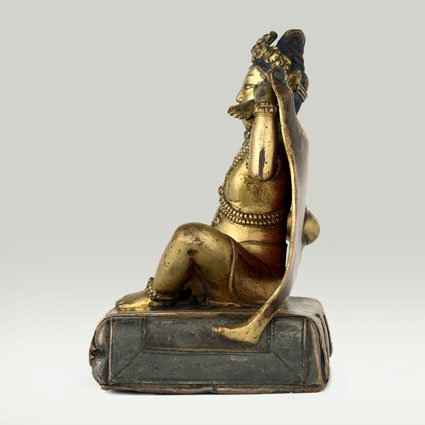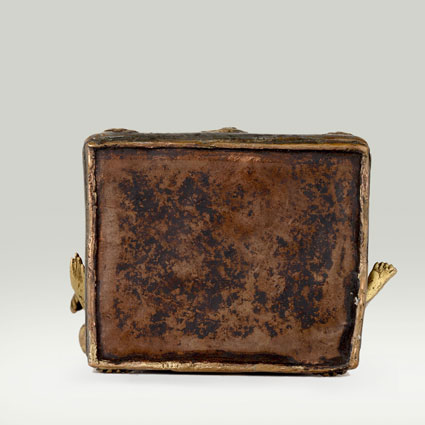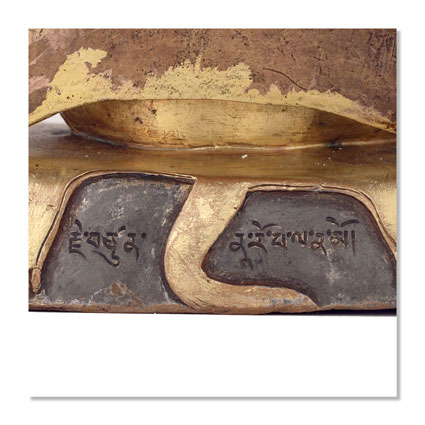ABS 188
Code: ABS 188
Country: Tibet
Style:
Date: 1700 - 1700
Dimensions in cm WxHxD: 9.5 x 12 x 8
Materials: Gilt sheet of hammered copper
Indian mahasiddha Naropa
This statue represents an Indian yogi seated in the ease posture on a tiger hide covering a double cushion. Dressed only with a loincloth, he is adorned with the bone ornaments of the charnel ground. His two raised hands unfold a flayed human skin covering his shoulders as a shawl. This detail identifies him as Naropa (956-1040), a most famous mahasiddha, disciple of Tilopa and master of Marpa the Translator (1012-1097), founder of the Kagyü school of Tibetan Buddhism. A key figure of tantric Buddhism in Tibet, his teachings and tradition played a major role in the development of Vajrayana in the Land of Snow.
Mahasiddhas or “great accomplished ones” are yogic masters of India and Tibet endowed with psychic abilities and spiritual powers, and leading unconventional lifestyle. The tradition attributes to them the tantras, the founding literature of Vajrayana, the esoteric form of Buddhism.
This statue represents an Indian yogi seated in the ease posture on a tiger hide covering a double cushion. Dressed only with a loincloth, he is adorned with the bone ornaments of the charnel ground. His two raised hands unfold a flayed human skin covering his shoulders as a shawl. This detail identifies him as Naropa (956-1040), a most famous mahasiddha, disciple of Tilopa and master of Marpa the Translator (1012-1097), founder of the Kagyü school of Tibetan Buddhism. A key figure of tantric Buddhism in Tibet, his teachings and tradition played a major role in the development of Vajrayana in the Land of Snow.
Mahasiddhas or “great accomplished ones” are yogic masters of India and Tibet endowed with psychic abilities and spiritual powers, and leading unconventional lifestyle. The tradition attributes to them the tantras, the founding literature of Vajrayana, the esoteric form of Buddhism.

